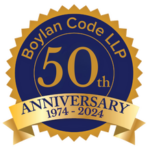The law is always going to be playing catch up to technology. That is an often-used saying amongst attorneys, and nowhere is it more prevalent than in the area of digital assets estate planning.
In today’s world, essentially every aspect of our lives is becoming increasingly more digital, but despite this reality, many estate planning practitioners either continue to rely on traditional planning principals for the disposition of digital assets, avoid the issue altogether, or simply fail to consider digital assets in the estate planning process. In either case, the consequences of failing to properly plan for a client’s digital assets can be extremely significant. Therefore, in today’s digitized world and going forward, a necessary component of a complete estate plan will be to address and account for the disposition and administration of an individual’s digital assets.
Vastly over-simplified, an executor’s job is to identify the decedent’s assets, pay the decedent’s debts, and distribute the decedent’s assets pursuant to the terms of the Last Will and Testament. This process used to typically involve searching through the decedent’s records, accounts, and mail for his or her assets and liabilities. In the digital age, however, “paper trails” such as the ones previously described may no longer exist. For instance, many individuals take advantage of “paperless billing”, their accounts are set up so that bill payments are automatically withdrawn from bank accounts, and receipts are e-mailed rather than printed. In that example, if an individual failed to properly plan for the disposition of his digital assets, his bills may go unpaid, his assets may be forever lost, and as a result, the estate administration process may be unnecessarily delayed. As technology continues to intertwine itself deeper and deeper into our daily lives, it is essential that the once traditional estate planning techniques used by estate planners be modified in order to fully and accurately account for a client’s digital assets.
It is essential in the estate planning process for estate planning professionals (and their clients) to understand the definition and scope of digital assets. While there is no uniformly accepted definition, digital assets typically include electronically stored information which may be stored locally or “in the cloud”, web sites such as e-mail, social networking sites (Facebook, LinkedIn, Google+, MySpace, etc.), eBay, PayPal, web pages, blogs, photo sharing accounts (e.g., Flickr), video sharing accounts (e.g., YouTube), music accounts (e.g., iTunes and Pandora), online video games and online storage accounts, and the content an individual uploads onto these websites, (e.g., songs, photos, videos, and other data). Digital assets also include intellectual property, such as copyrights, trademarks, trade secrets, rights of privacy, and rights of publicity. Moreover, digital asset rights may exist for subscribers to online games where they have paid for and may have even created or acquired online gaming avatars and other assets in online games.
When beginning the estate planning process with a new client, a typical “first-step” for an estate planning attorney is to provide the client with a data organizer so that the client can prepare an inventory of his assets and liabilities. Importantly, the data organizer must now include a comprehensive inventory of a client’s digital assets in addition to the client’s more traditional assets, such as bank and brokerage accounts, real estate, vehicles, etc . . . . Many of a client’s digital assets may prove to have considerable financial or sentimental value, and the failure to properly catalogue such digital assets can make it difficult, if not impossible, for a fiduciary to identify them upon the client’s incapacitation or death. For example, if a decedent sold a painting shortly before his death and accepted payment by way of an online transfer to a PayPal account, a significant amount of money could be sitting in the PayPal account, unknown to the executor, since PayPal typically communicates with its users by way of e-mail. In that instance, if the decedent’s data organizer did not include his PayPal account information, the result could be a failure to locate this asset. Similarly, the process of photo collecting has, for the most part, gone digital, with more and more individuals saving sentimental photos to their Flickr or Facebook accounts. Even though the photos most likely would not have any significant financial value, they could be lost forever if account information is not properly catalogued for use by an individual’s fiduciaries. As a result, the data organizer should include user names and passwords for all digital assets.
Estate planning in the digital asset era should authorize a client’s fiduciaries to access, maintain, distribute, and dispose of a client’s digital assets. Traditionally, many estate plans consist of a Durable Power of Attorney and a Last Will and Testament and/or a Trust. While a typical Power of Attorney form authorizes an agent to pay bills, engage in banking and real estate transactions, pursue tax matters, and generally access and maintain all other property of a principal, they are traditionally silent as to an agent’s ability to access, use, control, modify, delete, and transfer a principal’s digital assets. Such duties should be incorporated into an estate planner’s Power of Attorney form to ensure that an individual’s digital assets can be accessed if an individual becomes incapacitated. Additionally, a Last Will and Testament (or a Trust, as applicable) should specifically authorize an executor/trustee to access, handle, distribute, and dispose of all digital assets. It may also be advisable to reference an external memorandum of digital assets, which would contain all relevant user names and passwords, in order to inform the agent/executor/trustee of the existence of an individual’s digital assets.
Despite the best planning, however, certain statutes have been enacted that may significantly impact the estate planning for (and administration of) digital assets. Federally, the Computer Fraud and Abuse Act (“CFAA”) and the Stored Communications Act (“SCA”) are designed to prevent unauthorized access of electronically stored information and to prevent service providers from knowingly disclosing the contents of electronically stored communications. At the state level, in New York, Bill A823-2013 has been proposed to amend the New York estates, powers and trusts law, in relation to access to a decedent’s electronic mail, social networking and/or micro-blogging accounts, however, as of the date of this writing, the Bill has not been voted on. To further complicate this matter, almost every type of digital asset is subject to a unique Terms of Service agreements (“TOS”), which, despite any state law to the contrary, will effectively limit a fiduciary’s access to and control of a digital asset. Recently, the Uniform Law Commission created the Fiduciary Access to Digital Assets Act (“FADAA”), which is aimed at allowing executors, trustees, agents, or the person appointed by court (“conservator” or “fiduciary”) to gain complete access to an individual or decedent’s digital assets, but as of the date of this writing, the FADAA has not been voted on.
In the modern, digital world, it is crucial that a complete estate plan specifically address the disposition and administration of an individual’s digital assets. In that same regard, fiduciaries administering and managing an individual’s estate must be mindful of potentially valuable (financially or emotionally) digital assets and should be aware of laws and TOSs that may impact the disposition or administration of such assets. Clients whose current estate plans do not address their digital assets are encouraged to review and update their estate plans with counsel, and likewise, fiduciaries (i.e., agents, trustees, executors or conservators) are encouraged to seek advice regarding compliance with federal and state laws when administering estates containing digital assets.
Joshua Beisker is a Senior Associate at Boylan Code LLP, concentrating his practice on estate and trust administration and transfer tax planning. For more information, please contact Joshua at (585) 232-5300 or jbeisker@boylancode.com.


